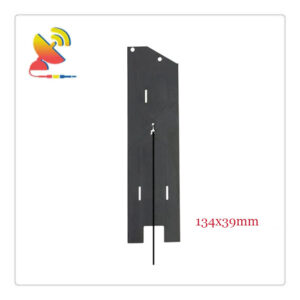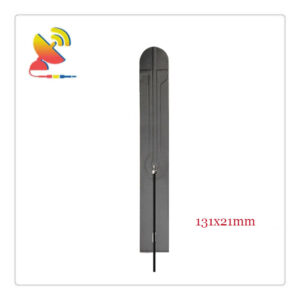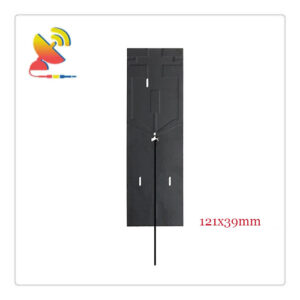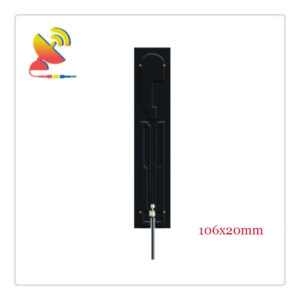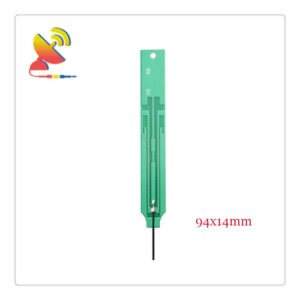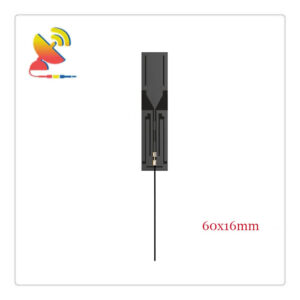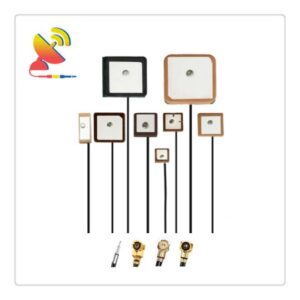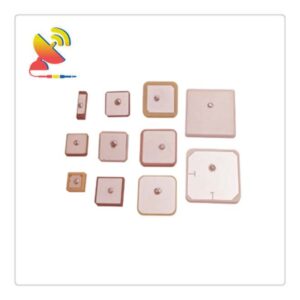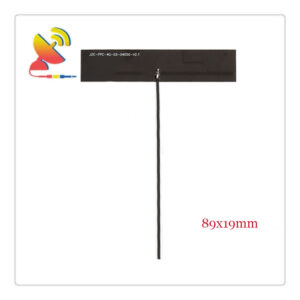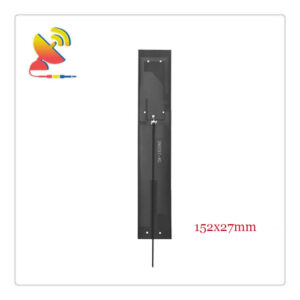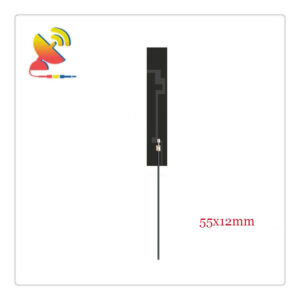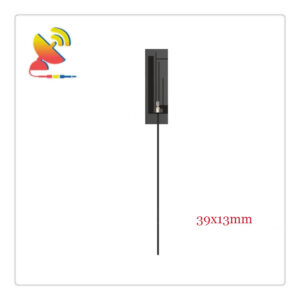PCB Antenna Design
Custom Antenna Manufacturer
PCB Antennas
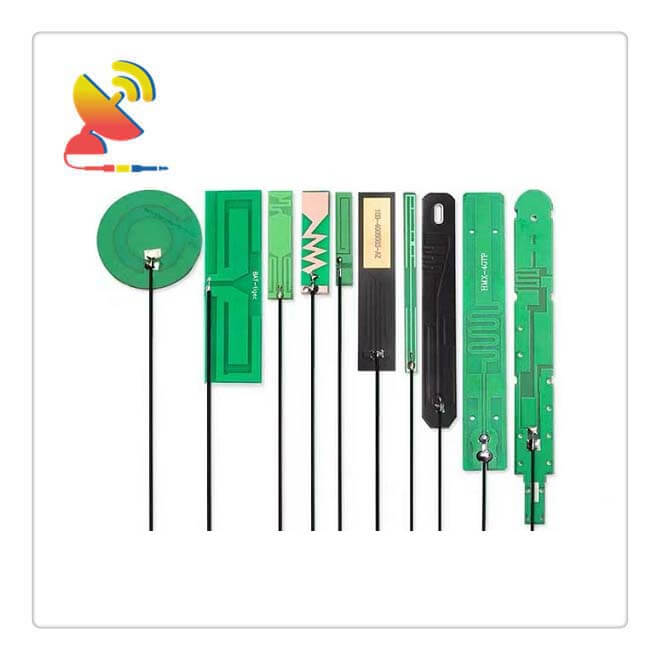
Embedded Antenna Design
All PCB antennas are board-specific and the dimensions and matching will need to be determined for each implementation. Copying an existing design does not ensure good performance. Gain and radiation patterns will vary as the parameters in the surrounding areas change. The length of the antenna will need to be adjusted according to these variables. Additionally, the final tuning and matching should be completed in the end product enclosure and installation, not in the open air.
The C&T RF antennas Inc’s PCB-Based Embedded Antennas for RF solutions
The C&T RF antennas Inc’s Embedded Antennas feature a highly efficient PCB-based low profile design optimized for confined industrial designs. Ideal for embedded applications requiring integration flexibility, the Profile family includes case, through-hole, and SMT mount designs and is available in single, dual, tri-band, and multi-band applications.
Features:
1). Highly efficient PCB-based antenna solutions for ODMs and OEMs
2). Low profile embedded antenna design for confined industrial designs
3). The case, through-hole, & SMT mount designs for embedded applications requiring integration customization
4). Designed for use in WLAN, WiFi, GSM, GPRS, GPS, NB-IoT, Lora, ISM, LPD (433 MHz), Cellular LTE, and New 5G frequency bands.
Benefits:
Stable and reliable in performances
PCB antenna has excellent sensitivity to consistently provide high signal reception efficiency
Compact size
RoHS compliance
The C&T RF antennas Inc’ embedded antenna attaches directly to the PCB and is hidden inside the product case. They’re a good fit for applications where concerns about the size, appearance, security, or environmental issues make an external antenna impractical.
How you can make the PCB/Flex PCB antenna?
- Understand the available typical antenna kinds
Basic PCB layouts that are extensively readily available consist of the monopole, L-type, and F-type. Basic F-type antennas are one of the most thoroughly made use of, and supply the greatest trade-off in between dimension, performance, and are relatively omnidirectional. A meandering map can surely be made use of to portable the PCB location, however, this will go to set you back on efficiency.
- Take into consideration the Building of your Circuit Board
The PCB map size will figure out the resonant frequency; the greater the regularity the much shorter the map. Each antenna needs a keep-out location on the PCB. This is specified as a location about the antenna map where no copper traces or ground load can surely be made use of on any kind of layer of the PCB.
Bigger traces are frequently much far better, as they generally offer a larger data transfer. The map can surely either be gold flashed or protected with a solder mask. The antenna’s electric efficiency will be established by the substratum product made use of, its density, and its dielectric consistency (εR).
- The Ground Airaircraft is Vital!
PCB map antennas are ground air aircraft reliant, as they should have actually a ground air aircraft to work. The form and dimension of the ground air aircraft about the antenna will impact the insusceptibility and efficiency of the PCB antenna. The ground air aircraft ought to have actually vias along the whole side of the antenna keep-out
location.
The fundamental treatment appears like this:
Choice an IC
Check out the Datasheet of your chip, locate the instance design area
Does your application have actually physical dimension constraints? Does your Antenna need to be directional?
Utilize the solution to the over concerns to pick your antenna kind (whip, cable, chip, PCB trace)
Make your PCB design based upon the instance design. Dimension the feedline for your application
Develop some boards
Examination the antenna with an SMA adapter and a range analyzer, when possible. (in your room if you are utilizing one)
Utilize your screening result in proper your make
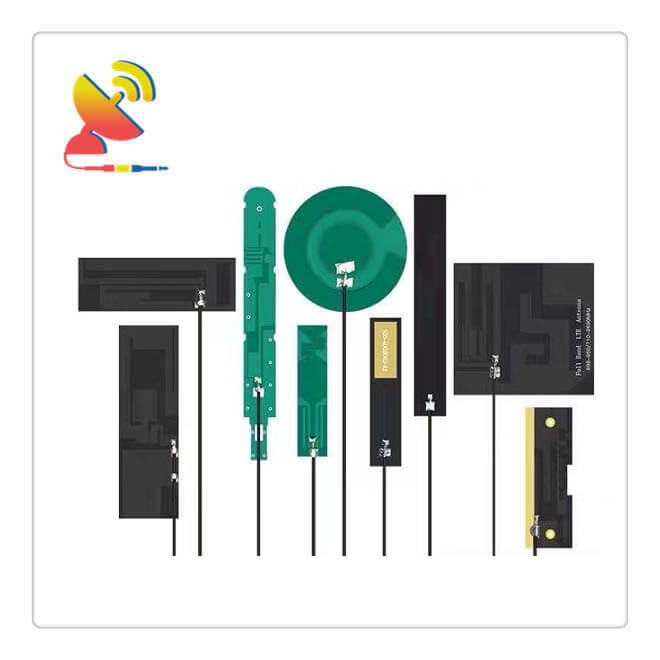
Your PCB Antenna Manufacturer
Why focus on PCB antennas?
In the vast landscape of IoT sensor technologies, protocols, vendor-specific SoCs and development boards, antennas, link budgets, and integrity of the wireless link between nodes are often overlooked.
Most IoT devices use whip antennas, PCBs, or chip antennas, with The specific antenna is usually determined by an omnidirectional directional map with a specific vertical/horizontal beamwidth.
If a specific edge device must be connected, a directional antenna (e.g., Yagi) may be used. directional antennas (e.g., Yagi) are used to extend the range. Each antenna type has its own advantages and considerations.
PCB antennas are efficient because of the balance between gain and size. be configured inside the housing rather than sticking out like a representative whip antenna.
Unlike chip antennas, PCB antennas can operate at a relatively high gain over a relatively large bandwidth.
During manufacturing, PCB antennas can even be embedded into system-level boards to achieve a smaller device size.
In addition to the substrate surface, antenna design and placement may also need to focus on the integrity of the link one-by-one radiation quality will be directly affected by the adjacent electronic components, metal enclosure hardware, and the quality of the antenna. adjacent electronic components, metal enclosure hardware, and environmental interference.
When trying to improve the link budget, it is important to consider the transmit/receive antenna gain, free-space path loss at a given carrier frequency, antenna feed loss, transmitter and receiver loss, and various environmental losses and other factors.
However, regardless of the environment, the directional map, gain, VSWR, and bandwidth are all parameters that are initially evaluated in the first step of wireless link development and optimization. However, regardless of the environment, the directional map, gain, VSWR, and bandwidth are all parameters that are initially evaluated in the first step of wireless connection development and optimization.
Your PCB Antenna Manufacturer
Understanding common PCB antenna designs
PCB antenna structures can be monopole, dipole, slot, patch, and planar inverted F (PIFA).
Dipole and monopole antennas
Dipole antennas consist of two quarter-wavelength (N/4) long metal strips with a total electrical length required to be half a wavelength (N2) below the carrier frequency for maximum response.
Due to the widespread use of legacy protocols such as Bluetooth and Wi-Fi, much of the antenna literature focuses on antenna design in the 2.4 GHz ISM band. At 2.4 GHz, the length of the dipole antenna is about 6 cm, which may be too large for some applications. The omnidirectional radiation direction map has a concentrated electromagnetic energy perpendicular to its length (z-axis) with a zero point in the middle (along the z-axis).
This usually requires placement in the vertical direction to obtain maximum horizontal summer coverage one by one for designers intending to use dipole (or monopole) antennas in IoT devices, which is a cause for careful consideration.
The addition of a grounding element eliminates one arm of the dipole, resulting in a structure that includes a single quarter-wavelength conducting element with the grounding element acting as the other quarter-wavelength arm.
Similar to a mirror, the grounding element generates a virtual image of the same directional map (same direction and phase of current flow) as the conducting element.
In order for the grounding element to function optimally, it must be guaranteed to be much larger than half a wavelength. A finite grounding element leads to edge diffraction of the radiated wave, which causes the electromagnetic energy to move radially outward from the edge and leak behind the grounding element.
Ideally, for a perceptually infinite ground element, the gain of a quarter-wavelength monopole antenna should be twice that of a half-wavelength dipole antenna, because the ground element radiates only to the area above it.
This will lead to the formation of some degree of lift direction map. Again, create a zero point along the length of the conducting quarter-wavelength element (z-axis) to show the desired vertical orientation.
Bending monopole antennas
The bent monopole variants of L-shaped (or tilted whip and inverted L), planar inverted F (PIFA) and zigzag inverted F (MIFA) structures utilize the same grounding element and conducting arm approach, but with a different conducting arm pattern.
The bending of the alignment allows for more compact dimensions as well as a reduction in the zero point in the radiation direction diagram.
However, in these designs, the antenna alignment usually cannot be too close to the ground, which would cause the antenna to act as a transmission line without any radiation.
Among these variants, PIFA is the most common because of its smaller PCB area and wide bandwidth performance.
The PIFA has a fold on the main resonant line which introduces a capacitance that is offset by a short-circuit feed point at the end of the line.
Matching impedance to the antenna feed source is obtained by adjusting the lengths of A, B, and C, where A and C are sized to benefit the quarter-wavelength element, and B is adjusted for matching impedance. An external matching network can also be incorporated for additional adjustment.
The MIFA antenna increases the total length and resonates through different directions of alignment/line compression, thus resembling a spiral antenna. In MIFA, the horizontal and vertical lines form multiple turns.
As with PIFA, tuning is accomplished by adjusting the geometry within the zigzag lines. This effectively reduces the size of the antenna.
However, there are advantages and disadvantages, and other aspects may be affected, such as reduced gain and consequently reduced range, increased tuning dependence and consequently narrower bandwidth, and increased sensitivity to interference from external sources as well as local electronics on the board.
Dipole Antenna Variants
Printed dipole antennas mainly face a size disadvantage. This is especially relevant for low frequencies;
Here, the advantage of a monopole antenna element is its potential placement in a corner of the board, where the grounding element is used both as an RF ground plane/return path for the antenna and as a grounding element for the local electrical components of the crop networking module.
However, as the operating frequency increases, this disadvantage becomes less prominent.
In addition, different dipole patterns can be used to increase bandwidth and reduce the size as with bent monopole antenna structures.
Making the dipole arm gradually narrower is a known bandwidth enhancement technique.
For example, the plane tapered dipole antenna (also known as butterfly antenna) behaves as a uniform tapered transmission line. When the RF signal is applied to the feed source, the current will flow radially outward and form a closed magnetic field.
The current terminates abruptly at the edge of the butterfly, resulting in more reflections and narrower widths compared to its 3D biconical shape.
Nevertheless, the antenna can achieve relatively constant impedance and gain over a large frequency range relative to other dipole antennas.
Along the same line of reasoning found in the bent monopole quarter-wavelength antenna, a smaller form factor can be obtained by bending the conducting arm of the dipole element.
As mentioned earlier, this optimizes the Q but reduces the overall bandwidth and efficiency. Therefore, the use of self-resonant space-saving techniques (e.g., spiral or bent conductive arms) in applications must be weighed against the pros and cons.
World's Fastest PCB Antenna Design Manufacturer
C&T RF Antennas Manufacturer
C&T RF Antennas Inc is a leading RF antenna designer and manufacturer of professional communication products including antennas, cable assemblies.
C&T RF Antennas manufacturer’s philosophy is to manufacture exceptional products with the highest quality components to assure customer satisfaction.
C&T RF Antennas manufacturer internal quality assurance programs have allowed C&T RF Antennas manufacturer to become ISO 9001:2008 certified.
C&T RF Antennas manufacturer onsite engineering department allows them to design, develop and test new products for everyone from the OEM industry to the home amateur radio operator.
C&T RF Antennas manufacturer’s house packaging allows them to private label products for C&T RF antenna customers.
Let C&T RF Antennas manufacturer help you with your professional communication needs.
Technology
Schedule on the fly
C&T RF Antennas Inc provides the fast antenna design and antenna manufacturing.
Senior Designers
C&T RF Antennas Inc has 5 senior designers and A highly skilled technical team.
High Reputation
C&T RF Antennas Inc is doing win-win business with customers based on the high reputation.
Quick Reply Within 12 Hours
C&T RF Antennas Inc sales team will respone your message within 12 hours after you drop us.
Our Services

C&T RF Antennas Inc manufactures PCB antennas with various frequency bands.
PCB ANTENNAS
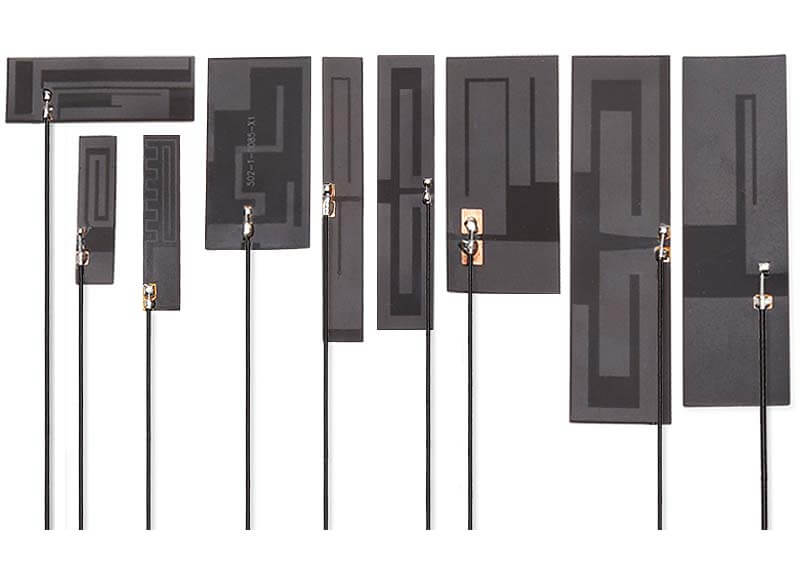
C&T RF Antennas Inc manufactures FPC antennas with various frequency bands.
FPC ANTENNAS
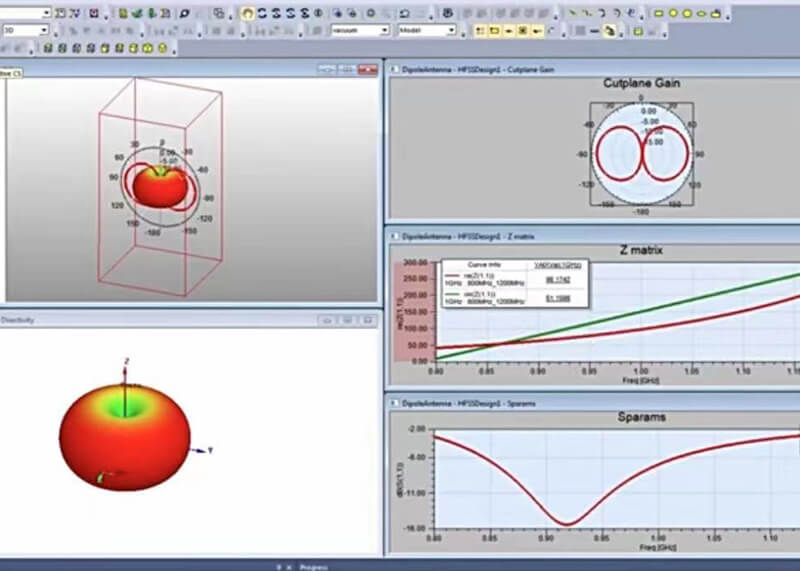
C&T RF Antennas Inc provides embedded antennas design and customization.
ANTENNA DESIGN
C&T RF Antennas Inc is the PCB antenna and Flexible PCB / FPC Antennas designer & manufacturer in China.
About us
C&T RF Antennas Inc is the leading internal antennas and external antennas manufacturer.
Our mission
Spend a small amount of money to make your product transmit farther and maximize the value.
Our offer
The Newest Antenna Products
-
High-Gain 4G 5G Multi-Band PCB Antenna
Read more -
High-Gain 5G New Radio (NR) PCB Antenna
Read more -
High-Gain NB-IoT LTE 5G PCB Antenna
Read more -
High-Gain Internal PCB 5G/4G LTE Antenna
Read more -
High-Gain Rigid PCB GSM LTE 5G IPEX Antenna
Read more -
High-Gain Wideband 5G/LTE/LPWAN PCB Antenna
Read more -
High-Gain 5G Cellular Cat-M/NB-IoT PCB Antenna
Read more -
High-Gain 5G NR Rigid PCB Cellular Antenna
Read more -
High-performance Flexible PCB Cellular 5G Antenna
Read more -
High-performance Passive IPEX GPS Patch Antennas
Read more -
High-performance Passive GPS Ceramic Patch Antennas
Read more -
High-gain 4G LTE Cellular Flexible PCB Antenna
Read more -
High-gain 4G LTE WideBand Flex Antenna
Read more -
High-performance Flexible 4G LTE Router Antenna
Read more -
High-performance Flex PCB LTE 4G Router Antenna
Read more -
High-performance Flex PCB 4G Antenna For Router
Read more
The Newest Articles
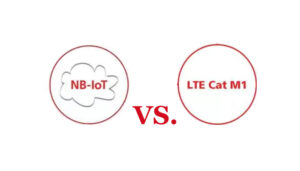
What is the Difference Between NB-IoT And Cat-M1?
This article clarifies the key the difference between NB-IoT and CAT-M1, and their use cases. NB-IoT and Cat M1 technology are two popular IoT connectivity
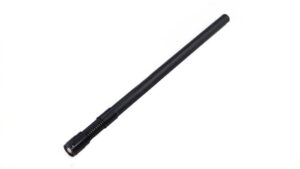
What is a Drone Antenna?
What does a drone antenna do? Drone antenna is the key link between the sky and the ground. With the rapid development of science and
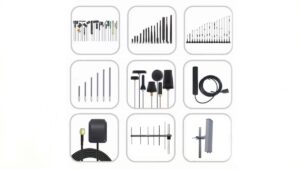
Antenna Selection Guide For RF Applications
The antenna selection guide for RF applications is telling you how to choose the right antenna for your radio frequency applications. Many hardware engineers, system

Top 14 IoT Trends to Emerge in 2024
After reading the Top 14 IoT Trends to Emerge in 2024 article, you will learn about what the 14 IoT Trends will be happening. What
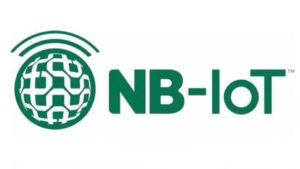
What Are NB-IoT Technology And Its Features?
Nb-IoT WiKi NB-IoT (Narrowband IoT) is a low-power technology designed for Internet of Things (IoT) applications and other low-data rate communication requirements.It uses narrowband radio
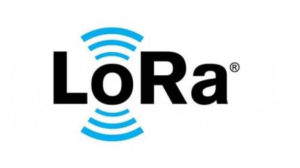
LoRa Alliance Extends LoRaWAN Standard to Support IoT Applications
LoRa Alliance Extends LoRaWAN Standard to Support the Internet of Things Applications The LoRa Alliance Extends LoRaWAN Standard to Support IoT Applications by adding TS013-1.0.0,

